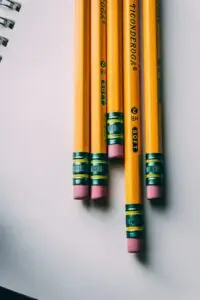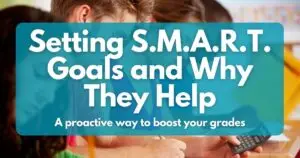Ramp Up Your Note Taking Skills
The truth is, students NEED to relearn the lost art of taking notes, especially after years of Zoom Class.
Here’s why this occurred to me.
A few weeks ago, my son’s 6th grade teacher surprised her class. There would be a planner check, and it would count for a large part of their grade.
My son freaked out. Most of his class freaked out. A few kids gloated.
My son, like many in his class, didn’t use his planner. Instead, he took screenshots of the assignments his teacher wrote down every morning, and then deleted them once he completed his homework.
The problem was, his teacher had told the class at the beginning of the year to use their planners every day.
It was a good lesson for many of them. Listen to directions. Follow directions. Give the teacher what he or she wants.
But it got me thinking about something else.
Pencils.
Yes, Pencils
My son almost never uses a pencil. He types. He does math in his head. He rarely writes anything by hand.
This made me wonder how widespread the problem was.
So I began asking my students to show me their notes from class whenever they were struggling with a concept. And guess what? No notes.

Note taking is vastly important.
Not only do students have a record they can look back on, but physically writing on paper creates new mental pathways that typing doesn’t match.
sTaking notes also forces mental processing, because students need to decide what is important enough for their notes, and that locks information into their brain much more effectively than does simply listening.
Take Notes!
So to all of our students out there, for the remainder of this school year, take notes. Take lots of notes. Try learning different note taking methods—such at the Outline Method, the Cornell Method, the Boxing Method, etc.—to see which works best for you. If you need help, ask your tutor, your teachers, or your parents.
Print it out!
You can also take notes directly on those endless Powerpoint presentations that your teachers painstakingly create, but print them out before class and take notes by hand! Fill in the details as your teacher goes through the slides, answer the questions posed, draw diagrams, etc.
Show your work!
For math and science, write down the steps that you’re tempted to do in your head. Stay organized on the page, and you’re much more likely to understand the process more fully, and much less likely to make simple mistakes. And when you do make mistakes, it’s much easier to look back, spot the mistake, and learn not to make it again.
So here’s a toast to the pencil, the world’s finest brain stimulant and without a doubt the first supercomputer.





